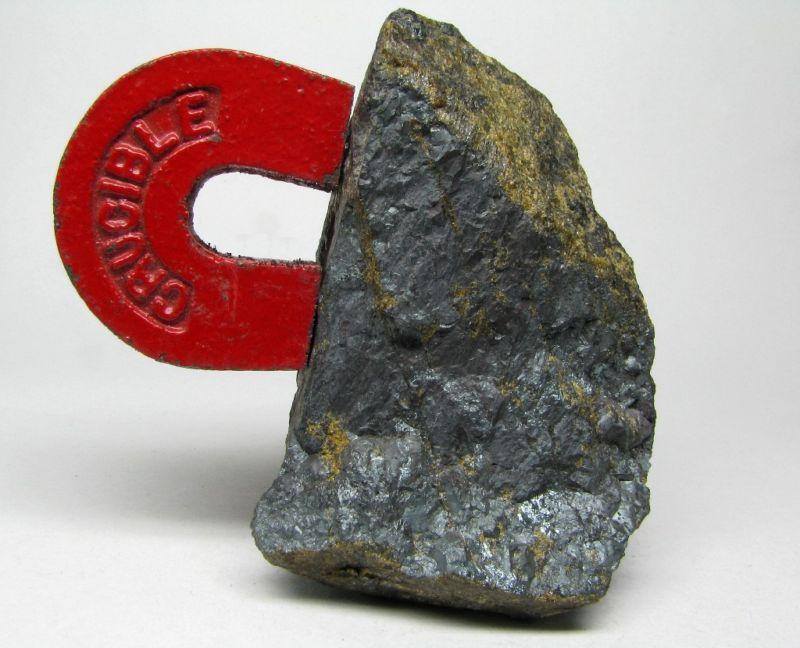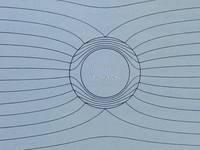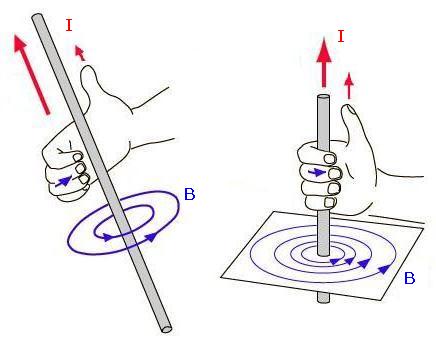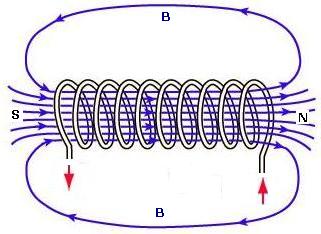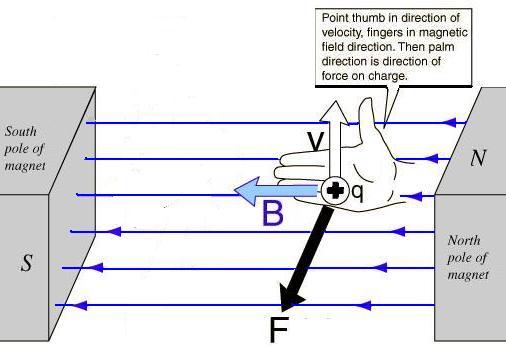Cycle IV Advanced Placement Physics
John Dewey High School
Mr. Klimetz
Magnetism and Magnetic Fields
Laboratory Exercise and Tutorial
 Introduction. An object that has the property of attracting iron or steel is called a magnet. The magnetism seems to be concentrated at the ends, or poles, of the magnet.
Introduction. An object that has the property of attracting iron or steel is called a magnet. The magnetism seems to be concentrated at the ends, or poles, of the magnet.
 In this experiment, we will observe that around every magnet there is a space, called the magnetic field, in which the magnetic effects can be detected and observed. The magnetic field is composed of imaginary lines, called lines of force, which form closed loops around (and within) the magnet.
In this experiment, we will observe that around every magnet there is a space, called the magnetic field, in which the magnetic effects can be detected and observed. The magnetic field is composed of imaginary lines, called lines of force, which form closed loops around (and within) the magnet.
 If a bar magnet is suspended so that it can rotate freely in a horizontal plane, the magnet will come to rest in an approximate north-south alignment. The end of the magnet which points north is the "north-seeking" pole or North (N) pole. The end of the magnet which points southward is called the "south-seeking" pole or South (S) pole.
If a bar magnet is suspended so that it can rotate freely in a horizontal plane, the magnet will come to rest in an approximate north-south alignment. The end of the magnet which points north is the "north-seeking" pole or North (N) pole. The end of the magnet which points southward is called the "south-seeking" pole or South (S) pole.
 Materials
Materials

 Two bar magnets
Two bar magnets

 One soft iron washer
One soft iron washer

 One 30 cm x 30 cm sheet of styrofoam poster board
One 30 cm x 30 cm sheet of styrofoam poster board

 One 18 cm x 26 cm sheet of clear acetate film transparency
One 18 cm x 26 cm sheet of clear acetate film transparency

 Fine dry iron filings
Fine dry iron filings

 Sifter container
Sifter container

 Compass
Compass
 Procedure
Procedure
 1. Field Around a Bar Magnet. Lay one of the bar magnets flat on the sheet of poster board resting as flat as possible upon the lab table. Cover the magnet with a sheet of clear acetate. Gently sift the iron filings from the container onto the acetate sheet sparingly from a height of approximately 25 cm. Tap the acetate sheet gently until the filings establish themselves in a visible pattern. Create a sketch of the resulting pattern of filings, which should follow the lines of magnetic force. Transfer the iron filings to a sheet of paper and return to the container.
1. Field Around a Bar Magnet. Lay one of the bar magnets flat on the sheet of poster board resting as flat as possible upon the lab table. Cover the magnet with a sheet of clear acetate. Gently sift the iron filings from the container onto the acetate sheet sparingly from a height of approximately 25 cm. Tap the acetate sheet gently until the filings establish themselves in a visible pattern. Create a sketch of the resulting pattern of filings, which should follow the lines of magnetic force. Transfer the iron filings to a sheet of paper and return to the container.
 2. Field Between Like Poles. Place the N pole of one bar magnet about 3 cm away from the N pole of a second bar magnet, keeping both in a lengthwise collinear alignment. Cover the N poles with the clear acetate sheet repeat the procedure as outlined in Part 1, and create a sketch of the lines of force between the like poles.
2. Field Between Like Poles. Place the N pole of one bar magnet about 3 cm away from the N pole of a second bar magnet, keeping both in a lengthwise collinear alignment. Cover the N poles with the clear acetate sheet repeat the procedure as outlined in Part 1, and create a sketch of the lines of force between the like poles.
 3. Field Between Unlike Poles. Place the unlike poles of the two bar magnets about 3 cm apart and both in a lengthwise collinear alignment. Repeat the procedure as outlined in Part 1, and create a sketch of the lines of force between unlike poles.
3. Field Between Unlike Poles. Place the unlike poles of the two bar magnets about 3 cm apart and both in a lengthwise collinear alignment. Repeat the procedure as outlined in Part 1, and create a sketch of the lines of force between unlike poles.
 4. Effect of Soft Iron. Between the unlike poles of two bar magnets, while both in a lengthwise collinear alignment, place the soft iron washer approximately in the middle and approximately 1 cm from each pole. Repeat the procedure as outlined in Part 1, and create a sketch of the magnetic lines of force, showing the effect of soft iron (a magnetically susceptible material) on the magnetic field.
4. Effect of Soft Iron. Between the unlike poles of two bar magnets, while both in a lengthwise collinear alignment, place the soft iron washer approximately in the middle and approximately 1 cm from each pole. Repeat the procedure as outlined in Part 1, and create a sketch of the magnetic lines of force, showing the effect of soft iron (a magnetically susceptible material) on the magnetic field.
 5. Induced Magnetism. Stand the soft iron washer upright and on edge on the poster board. Place a bar magnet with the N pole oriented perpendicularly to the washer surface. Bring a compass near to the end of the washer and observe the orientation of the compass needle.
5. Induced Magnetism. Stand the soft iron washer upright and on edge on the poster board. Place a bar magnet with the N pole oriented perpendicularly to the washer surface. Bring a compass near to the end of the washer and observe the orientation of the compass needle.
 6. Magnetic Shielding. Place the soft iron washer flat between the like poles of the two bar magnets, keeping both in a lengthwise collinear alignment. Allow about 1 cm of distance between the washer and the ends of each pole. Repeat the procedure as outlined in Part 1 and create a sketch of the magnetic field.
6. Magnetic Shielding. Place the soft iron washer flat between the like poles of the two bar magnets, keeping both in a lengthwise collinear alignment. Allow about 1 cm of distance between the washer and the ends of each pole. Repeat the procedure as outlined in Part 1 and create a sketch of the magnetic field.
Questions.
1. Like poles __________ each other, whereas unlike poles __________ each other.
2. Briefly describe the features and characteristics of a magnetic field.
 ________________________________________________________________________________
________________________________________________________________________________
 ________________________________________________________________________________
________________________________________________________________________________
3. Briefly describe the appearance of lines of magnetic force.
 ________________________________________________________________________________
________________________________________________________________________________
 ________________________________________________________________________________
________________________________________________________________________________
4. We assume that all magnetic lines of force pass from __________ to __________ outside
 the magnet, and from __________ to _________ inside the magnet.
the magnet, and from __________ to _________ inside the magnet.
5. Magnetic lines of force never __________ each other.
6. Using a compass, how can you determine whether an iron bar is magnetized?
 ________________________________________________________________________________
________________________________________________________________________________
 ________________________________________________________________________________
________________________________________________________________________________
7. Explain the relationship between and geometry of magnetic field lines with respect to a
current-carrying conductor.
 ________________________________________________________________________________
________________________________________________________________________________
 ________________________________________________________________________________
________________________________________________________________________________
8. Name four common devices which employ permanent magnets.
 ________________________________________________________________________________
________________________________________________________________________________
 ________________________________________________________________________________
________________________________________________________________________________
Objectives
How can we better understand the behavior and characterisitcs of magnets and magnetic fields?
How can we map the field of force around a magnet?
Image of the Magnetic Field Around a Single Bar Magnet and the Alignment of Compass Needles
Right Hand Rule 1: Ampere's Rule
Right Hand Rule 2: Solenoid Rule
Right Hand Rule 3: Lorentz Force Rule
B = magnetic field lines [T]

